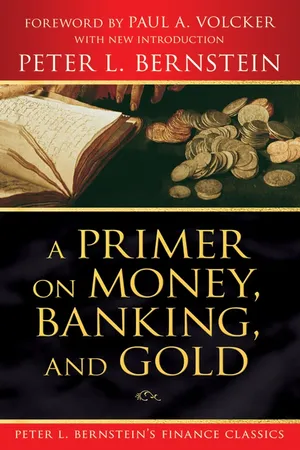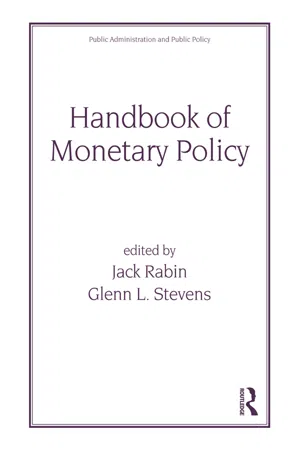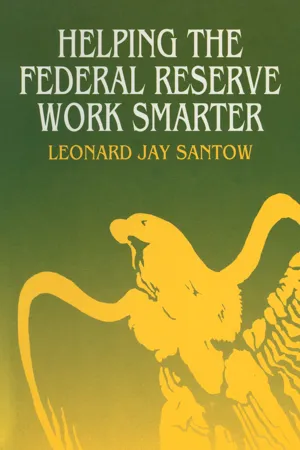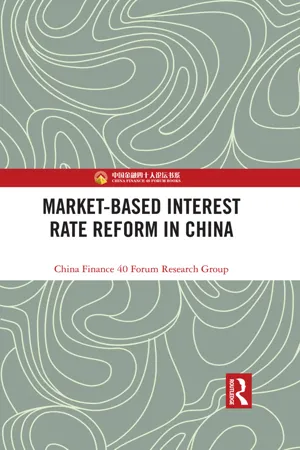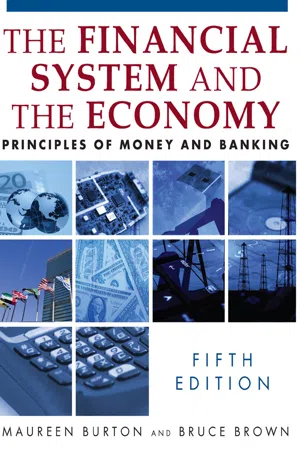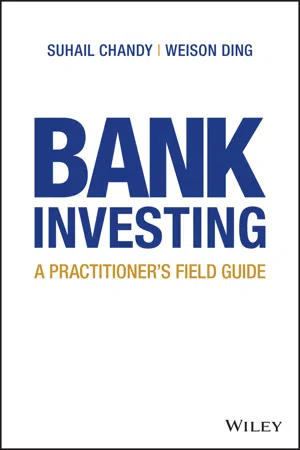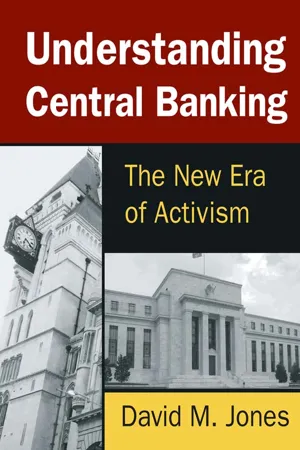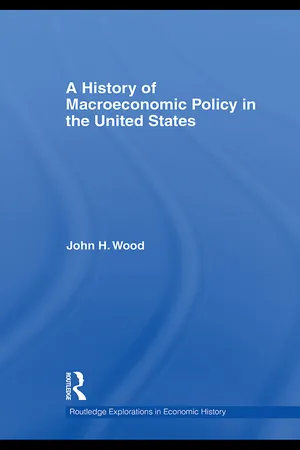Economics
Federal Discount Rate
The Federal Discount Rate is the interest rate set by the Federal Reserve for lending to commercial banks and other depository institutions. It is used as a tool to influence the money supply and credit conditions in the economy. By adjusting the discount rate, the Federal Reserve can encourage or discourage borrowing and spending by banks, which in turn affects the overall economy.
Written by Perlego with AI-assistance
Related key terms
Related key terms
1 of 4
Related key terms
1 of 3
9 Key excerpts on "Federal Discount Rate"
- Peter L. Bernstein(Author)
- 2008(Publication Date)
- Wiley(Publisher)
For example, they will refuse to give credit if a bank appears to be injudiciously overextended and should therefore liquidate securities or make fewer loans. They will refuse if a bank borrows for too long a period of time, and, in effect, uses the money borrowed from the Federal Reserve, instead of its depositors’ or stockholders’ money, to finance its lending and investing operations. In the words of the Board of Governors, Reserve Bank credit is generally extended to a member bank, “because of developments such as a sudden withdrawal of deposits or seasonal requirements for credit beyond those which can reasonably be met by use of the bank’s own resources . . .[or] in meeting unusual situations . . .or exceptional circumstances.”Borrowing from a Federal Reserve Bank is usually known as “discounting” and is customarily secured by U.S. Government securities put up as collateral. The Federal Reserve Banks naturally charge interest for these loans, the interest rate being known as the “discount rate.”As a general rule, the Federal Reserve Banks almost never keep the discount rate far below the rate of return on short-term Treasury securities. This would encourage an excessive amount of borrowing, as banks would use the reserves borrowed at a low rate to invest in (or refrain from selling) securities earning a higher rate of return. As a matter of fact, the discount rate is usually just about equal to or higher than the yield on U.S. Treasury bills—highly liquid obligations of the U.S. Government, maturing every ninety days. The higher the discount rate relative to the bill rate, of course, the more reluctant the banks will be to borrow and the greater the frequency with which they will sell securities to replenish their reserve positions.This indicates how effective discount-rate policy can be. When the discount rate is low relative to the bill rate, banks that are short on reserves will be encouraged to borrow from the Federal Reserve Banks in preference to selling securities. Thus, they will put no pressure on the reserve positions of other banks, for, if they sold securities, they would be receiving checks drawn by the buyers on other banks, reserves would shift from these banks to the bank selling the securities, and the shortage of reserves would spread. Borrowing from the Federal Reserve prevents a shortage of reserves in some banks from spreading to others.However, when the discount rate is high relative to the yield on securities, banks will be reluctant to borrow and will prefer to replenish a short reserve position by selling securities. Unless the Open Market Committee comes to the rescue and buys those securities, a shortage of reserves in some banks will tend to spread throughout the system.- eBook - ePub
- Jack Rabin(Author)
- 2020(Publication Date)
- Routledge(Publisher)
Discount rate Interest rate at which an eligible depository institution may borrow funds, typically for a short period, directly from a Federal Reserve Bank. The law requires that the board of directors of each Reserve Bank establish the discount rate every fourteen days subject to the approval of the Board of Governors.Equilibrium real interest rate The level of the real interest rate that is consistent with the level of long-run output and full employment.Excess reserves Amount of reserves held by an institution in excess of its reserve requirement and required clearing balance.Federal funds rate The interest rate at which banks borrow surplus reserves and other immediately available funds. The federal funds rate is the shortest short-term interest rate, with maturities on federal funds concentrated in overnight or one-day transactions.Fiscal policy Federal government policy regarding taxation and spending; set by Congress and the Administration.Foreign currency operations Purchase or sale of the currencies of other nations by a central bank for the purpose of influencing foreign exchange rates or maintaining orderly foreign exchange markets. Also called foreign-exchange market intervention.Foreign exchange rate Price of the currency of one nation in terms of the currency of another nation.Government securities Securities issued by the U.S. Treasury or federal agencies.Gross Domestic Product (GDP) The total market value of a nation’s output of goods and services. GDP may be expressed in terms of product—consumption, investment, government purchases of goods and services, and net exports—or, it may be expressed in terms of income earned—wages, interest, and profits.Inflation - eBook - ePub
- Leonard Jay Santow(Author)
- 2016(Publication Date)
- Routledge(Publisher)
Since 1964 the discount rate has been well below the funds rate in five periods: 1969 through late 1970; 1973 and 1974; almost all of the period from late 1979 through the first half of 1982; most of 1984; and the latter part of 1988 through 1990. Each period saw relatively high interest rates and the Fed preferred reserve control to bank punishment.A discount rate analysis is not complete without considering whether the rate should lag behind or lead other policy changes. In periods when the Fed is tightening, the governors typically do not like to be in the forefront of interest rate increases. Normally they want to give the impression of being reluctant rate followers because a discount rate increase is an overt move that often receives adverse publicity. Moreover, if the Fed makes an error in judgment, it is easier and less embarrassing for the governors to effect a quiet change in the course of federal funds targets than to vote for an overt increase in the discount rate. When the Fed is easing, however, using a reduction in the discount rate to lead other rates lower has public appeal. Overeasing may be a risk, but it is a problem that usually takes some time to develop.I have already said that the federal funds rate does not paint a totally accurate picture of monetary policy. The discount rate is an even less accurate indicator because it is an administered, not a market, rate. Moreover, there have been periods when the Fed wanted a punitive discount rate, periods when the rate was held slightly below the funds rate, and periods when the rate was held considerably below the funds level. Thus the path of discount rate changes may indicate policy direction, but the level tells the analyst little about the degree of ease or tightness.Window Borrowing Levels
The level of borrowing at the Federal Reserve discount window from 1964 to 1993 is presented in Figure 2.3 - eBook - ePub
- China Finance 40 Forum Research Group(Author)
- 2018(Publication Date)
- Routledge(Publisher)
Board members and the president of the Federal Reserve Bank of New York are standing members; four of the remaining 11 Reserve Bank presidents serve one-year terms on a rotating basis. FOMC members meet about every six weeks and make decisions on whether to change the federal funds rate. They will then issue a brief statement. On these meetings, the Federal Reserve announces their preference for future rate changes and reveals economic conditions to the market in advance. Such announcements are considered the forecast of the Federal Reserve monetary policies. The Chairperson appears before Congressional hearings on a regular basis and relevant officials speak on various occasions to communicate to the public the Federal Reserve’s understanding of economic conditions and the reasons for its policies. Therefore, the market can fully understand the Federal Reserve’s policy intentions. Specifically, since the 1980s, the discount window has been less effective and is now only an instrument of emergency assistance of the central banks. In 2003, the Federal Reserve set the discount rate higher than the federal overnight interbank repo rate (the federal funds rate), thus imposing a de facto cap on money market rates. But there was no formal deposit facility before 2008. As the largest player in the interbank market, the Federal Reserve mainly focuses on the federal funds rate in realizing monetary policy targets. If the federal repo rate is lower than the market rates, banks would borrow funds from the Federal Reserve and the market repo rate would drop. If the Federal Reserve raises the federal repo rate, the scenarios under different market conditions are as follows: If the market faces money shortage, the federal funds rate itself faces upward pressure and will rise along with the repo rate; if the market faces money surplus, commercial banks will borrow from other banks instead of the Federal Reserve - eBook - ePub
The Financial System and the Economy
Principles of Money and Banking
- Maureen Burton, Bruce Brown(Authors)
- 2014(Publication Date)
- Routledge(Publisher)
Owing to uncertainties about the behavior of debt and money, these ranges for many years have not provided useful benchmarks for the conduct of monetary policy. d As a consequence of all these changes, today the Fed uses the fed funds rate as the operating target and explicitly announces its short-term objective for that target after each FOMC meeting. Endnotes a. In addition to M1 and M2, the Fed used to track another measure of money, M3. M3 is an even broader measure of money than M2 and consists of everything in M2 plus large time deposits, term repurchase agreements and term Eurodollars, and institutional money market mutual funds. The correlation between changes in M3 and economic activity also broke down in the 1990s. M3, a measure of money tracked by the Fed was discontinued by the Fed in March 2006. b. Recall from Chapter 3 that, prior to January 2003, the discount rate was set by the Board of Governors and changed rather infrequently in response to requests from the Federal Reserve Banks. Changes in the discount rate usually lagged behind changes in other interest rates. At that time, the discount rate was often below other rates at which depository institutions could borrow reserves in the fed funds market. In January 2003, the primary credit rate (the discount rate at which the most creditworthy institutions can borrow) was set 1 percent above the targeted fed funds rate. In August 2007, the Fed approved a narrowing of the spread between the targeted fed funds rate and the primary credit rate to 0.5 percent. The purpose of the reduction in the spread was to mitigate the liquidity crisis caused by the subprime mortgage debacle, which spread to broader markets. The change was temporary but still in effect in late 2008 - eBook - ePub
Bank Investing
A Practitioner's Field Guide
- Suhail Chandy, Weison Ding(Authors)
- 2021(Publication Date)
- Wiley(Publisher)
Similar to the fed funds target, permanent open market operations influence the operating environment for banks. Higher longer-term rates will naturally benefit yields on certain loans benchmarked to those rates (like mortgage and CRE). However, the offset is that a tighter environment could dampen demand for those types of loan products, making growth incrementally harder.The Discount Rate and Discount Window represents the interest rate charged to banks on collateralized loans they receive from their regional Federal Reserve Bank's lending facility, known as the discount window. There are actually three separate rates at play here: primary credit, secondary credit, and seasonal credit. The primary credit program is usually an overnight loan, made to banks in sound financial condition. The rate is set at 50 bps over the fed funds target. Secondary credit is used to meet short-term liquidity needs or to resolve severe financial difficulties for those depositories ineligible for primary credit. The rate is set at 50 bps over the primary credit rate (i.e., 100 bps over the fed funds target). Seasonal credit is usually extended to small banks that deal with some form of seasonality in their business (i.e., agriculture). There is some stigma for financial institutions that tap the discount window, as the implication is that a bank tapping the discount window is suffering from liquidity issues and is unable to access other funding.The Reserve Requirement is one of the oldest tools available to central banks, and represents the amount of funds that a bank needs to hold in either vault cash or deposited at the Federal Reserve against deposits (Exhibit 7.13 ). This is to ensure that banks will have sufficient liquidity to handle depositor withdrawals. Fractional reserve banking is possible because banks are not required to hold a 100% reserve against their deposits. Thus, the reserve ratios are an important lever for the Federal Reserve to control credit. Higher reserve ratios will mean less lending activity, while lower reserve ratios will mean more lending activity.The Money Multiplier - eBook - ePub
Understanding Central Banking
The New Era of Activism
- David Jones(Author)
- 2014(Publication Date)
- Routledge(Publisher)
It might be useful to illustrate a “neutral” federal funds rate in practice. Starting in June 2004 and continuing through January 2006, the Fed engaged in a series of 14 “measured” increases in its federal funds rate target, as it sought to shift from an accommodative to a neutral policy stance. In a series of 25 basis point rate hikes timed to take place at each FOMC meeting, which financial market participants found increasingly predictable, the Fed increased its federal funds rate target to 4.5 percent from a 45-year low of 1 percent. Correspondingly, the Fed increased its discount rate to 5.5 percent from 2 percent.Under new Fed chairman Ben Bernanke, the monetary officials moved above a “neutral” federal funds rate target of 4.5 percent into restrictive territory. Bernanke hiked the federal funds rate target a fifteenth time to 4.75 percent, a sixteenth time to 5 percent, and a seventeenth time to 5.25 percent, with corresponding discount rate increases to 5.75 percent, 6 percent, and 6.25 percent.FED “CONVENTIONAL ” TARGETING OF THE FEDERAL FUNDS RATEUnder normal conditions, one can envision the federal funds rate target (4.5 percent) as being centered in a channel, with the discount rate (5.5 percent) as the ceiling, and the relatively new and untested interest paid on excess reserves (IOER) as the floor. In January 2003, the upper portion of this channel was fixed with the discount rate exceeding the federal funds rate target by a penalty margin of 100 basis points, but the margin was reduced to only 25 basis points in the fight against the Great Credit Crisis, and then reset at 50 basis points in February 2010. Regarding the lower portion of the channel, if the IOER is maintained just under the federal funds rate target, it will limit the extent to which Fed open market bond purchases will exert downward pressure on the federal funds rate. Conversely, the IOER may be useful in the Fed’s eventual exit strategy, serving to exert upward pressure on short-term interest rates (see Chapter 8 - John H. Wood(Author)
- 2009(Publication Date)
- Routledge(Publisher)
The fed funds rate has been the chief monetary-policy instrument most of the post-World War II period. It was not reported regularly until 1953, so another low-risk short-term rate—on bankers acceptances—is used in place of i f until then. The discount rate was the principal instrument until the 1930s, and has been used since in a supporting role. The periods chosen are those in which the Fed’s independence was greatest, although 1970–78 and parts of the others are questionable. Some of the periods are adjusted for estimation because, in the first, the Fed had to wait through 1920–21 to allow the economy to settle down sufficiently to be amenable to a systematic policy. In the second, the Fed’s independence under the Accord was not applied until 1953. In the last, several years—possibly to 1987—were required for the public’s inflationary expectations to adjust to the new regime, that is, for the Fed’s credibility to be established. The high real rates in the meantime are seen in Figure 7.1. Estimates of the rule are reported in Table 7.1, which reveals that the Strong-free-reserves relation has been significant throughout the Fed’s history when it was free to target interest rates. Specifically, the left-hand side of the table shows that the change in the New York Reserve Bank’s discount rate, i d (the discount rates of the other 11 Reserve Banks are closely attuned), responded negatively to the change in the free reserves, R f. The right-hand side does the same for i f- eBook - ePub
- Robert C. Lind, Kenneth J. Arrow, Gordon R. Corey, Partha Dasgupta, Amartya K. Sen, Thomas Stauffer, Joseph E. Stiglitz, J.A. Stockfisch(Authors)
- 2013(Publication Date)
- RFF Press(Publisher)
2 Robert C. Lind A Primer on the Major Issues Relating to the Discount Rate for Evaluating National Energy Options IntroductionThe purpose of this chapter is to introduce the reader to the central issues in the controversy over the choice of the discount rate for evaluating federal energy projects and policies and to develop a way to make specific recommendations on the selection of this rate and on procedures for evaluating federal policies and projects. The question of what rate of discount is appropriate for use in the evaluation of federal projects, that is, what is the social rate of discount, is complex and continues to be the subject of controversy among professional economists. This chapter is an attempt to lay out the major elements of the controversy in a manner that will make it accessible to readers with some knowledge of economics, but who are not professional economists, and to professional economists who have not followed the literature on this issue. The exposition relies largely on simple numerical examples, and the reader need not be familiar with the mathematical techniques employed in much of the recent literature on this subject. The reader who is conversant with the literature may also benefit from an organized review of the issues and have an interest in the analytical method that is developed to provide guidance to policy makers on the choice of the discount rate.Five concepts are central to the discussion of the choice of the social rate of discount, which is the rate that should be used to compute the present values of benefits and costs of public investments and public policies if decisions based on these benefit–cost analyses are to be optimal; that is, benefit–cost analysis using the social rate of discount will direct policy makers to the correct decision from a social perspective. These concepts are (1) the social rate of time preference, which is the rate at which society is willing to exchange consumption now for consumption in the future; (2) the consumption rate of interest, which is the rate at which individual consumers are willing to exchange consumption now for consumption in the future; (3) the marginal rate of return on investment in the private sector; (4) the opportunity cost of a public investment, that is, the value of the private consumption and investment forgone as a result of that investment; and (5) risk, which is related to the degree to which variation in the outcome of a public project will affect variation in the payoff from the nation’s total assets. These concepts will be introduced and discussed as issues pertaining to the choice of the social rate of discount are developed.
Index pages curate the most relevant extracts from our library of academic textbooks. They’ve been created using an in-house natural language model (NLM), each adding context and meaning to key research topics.
Explore more topic indexes
Explore more topic indexes
1 of 6
Explore more topic indexes
1 of 4
